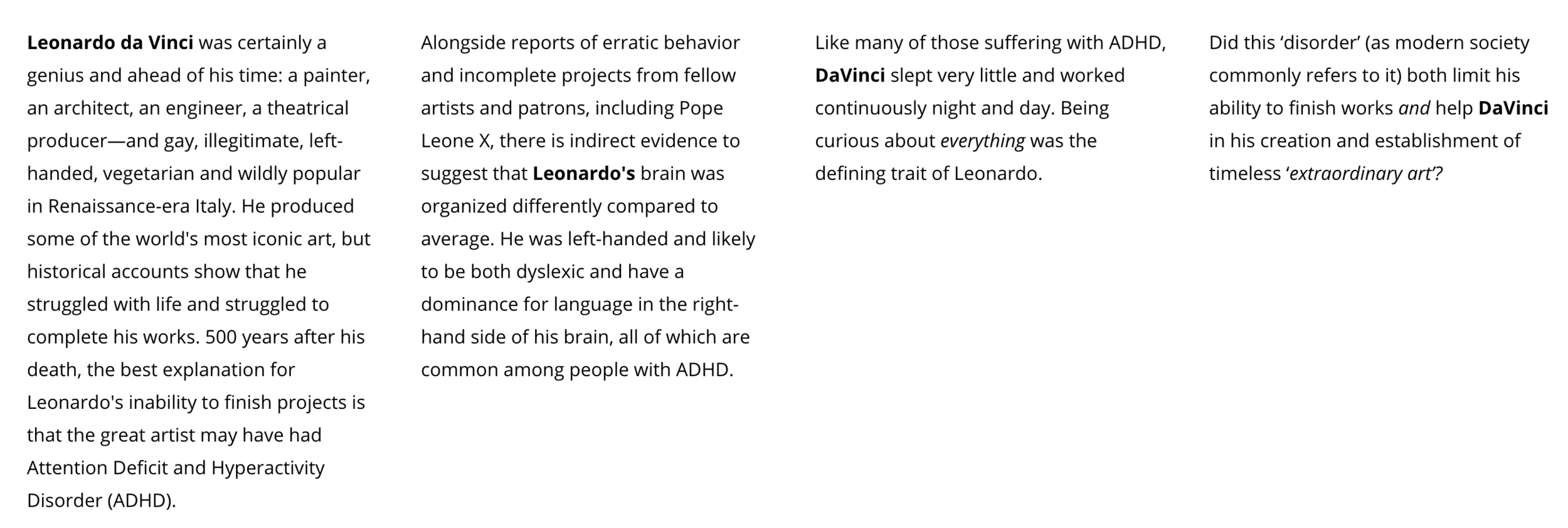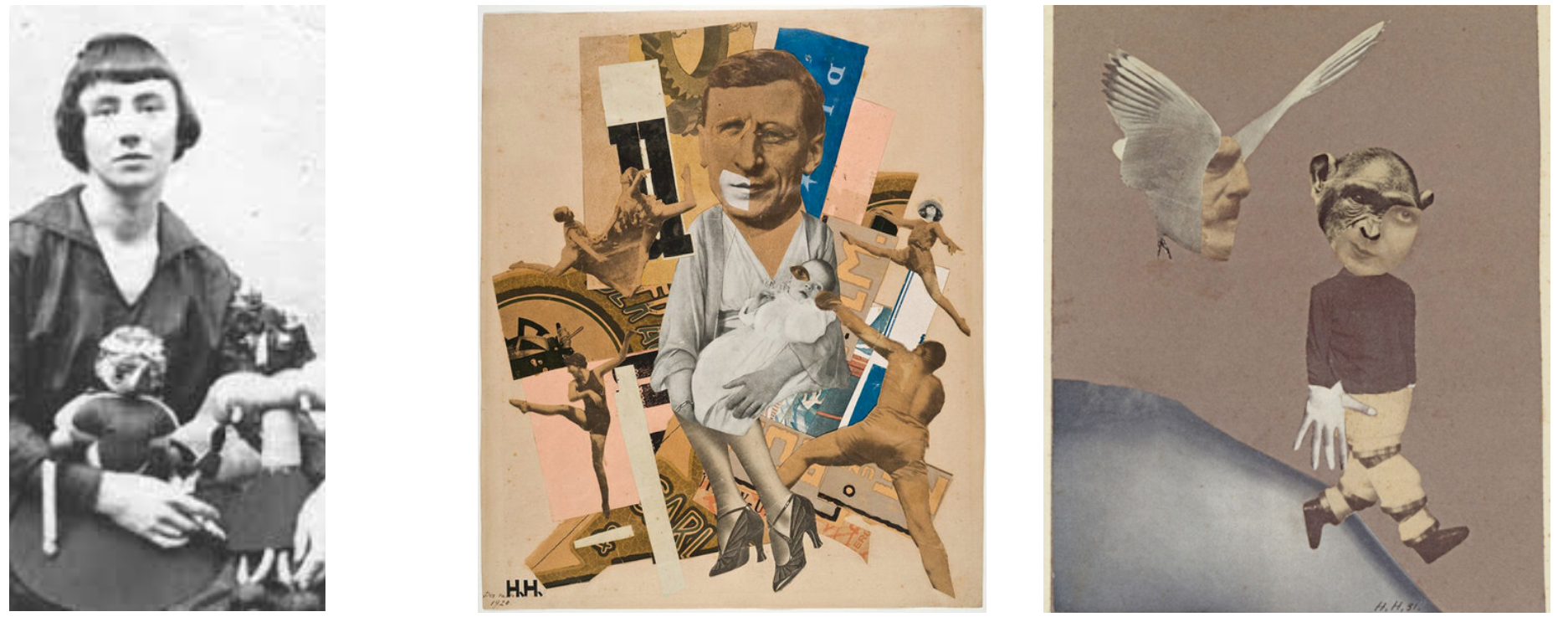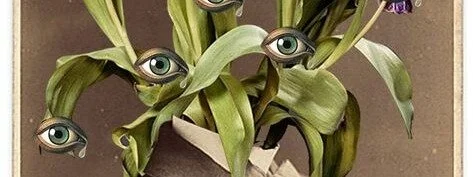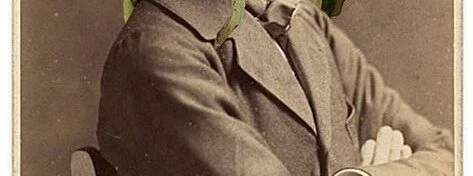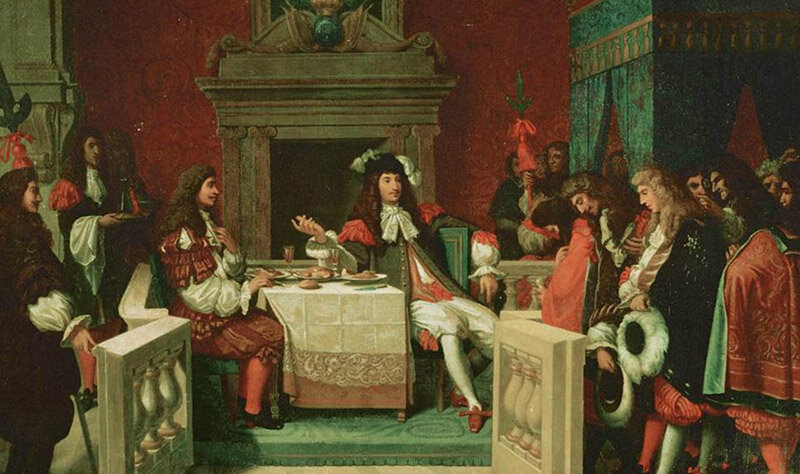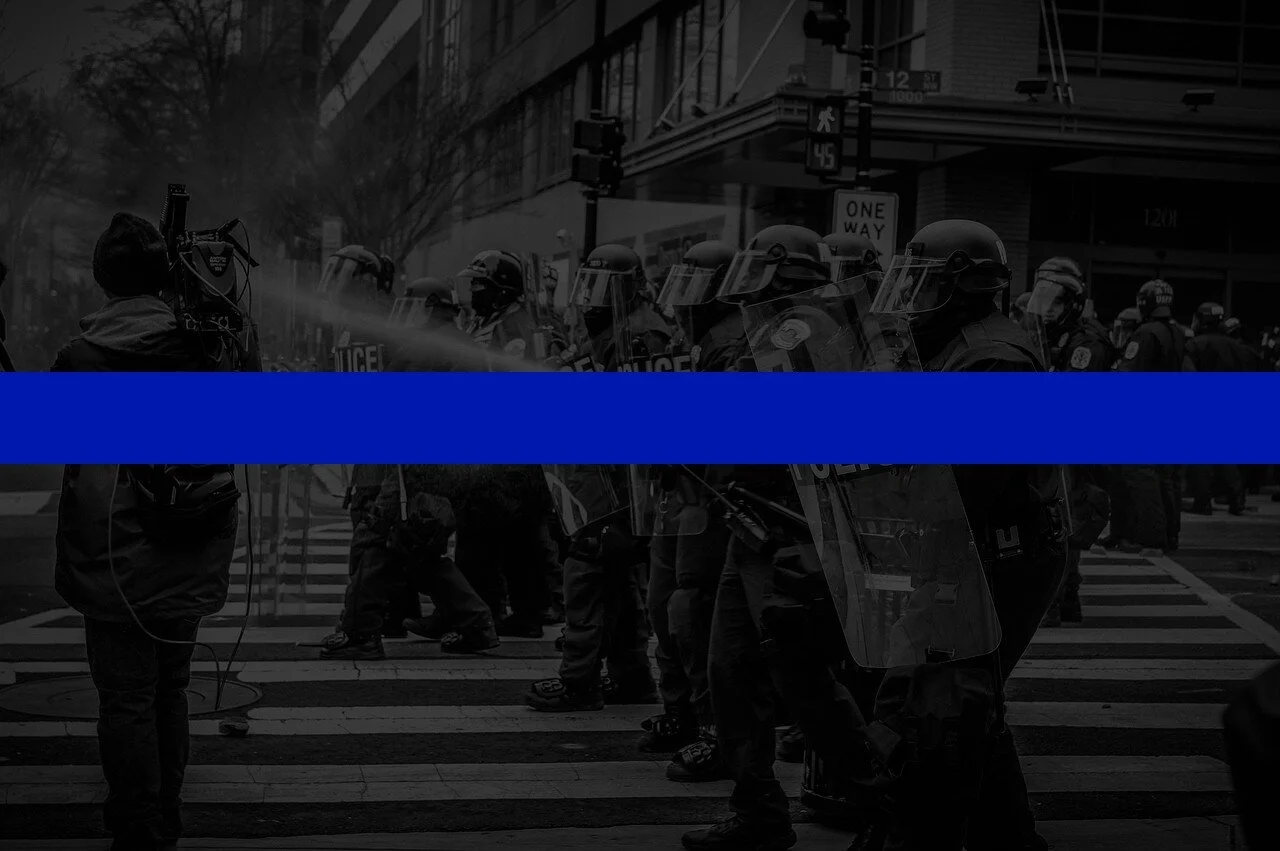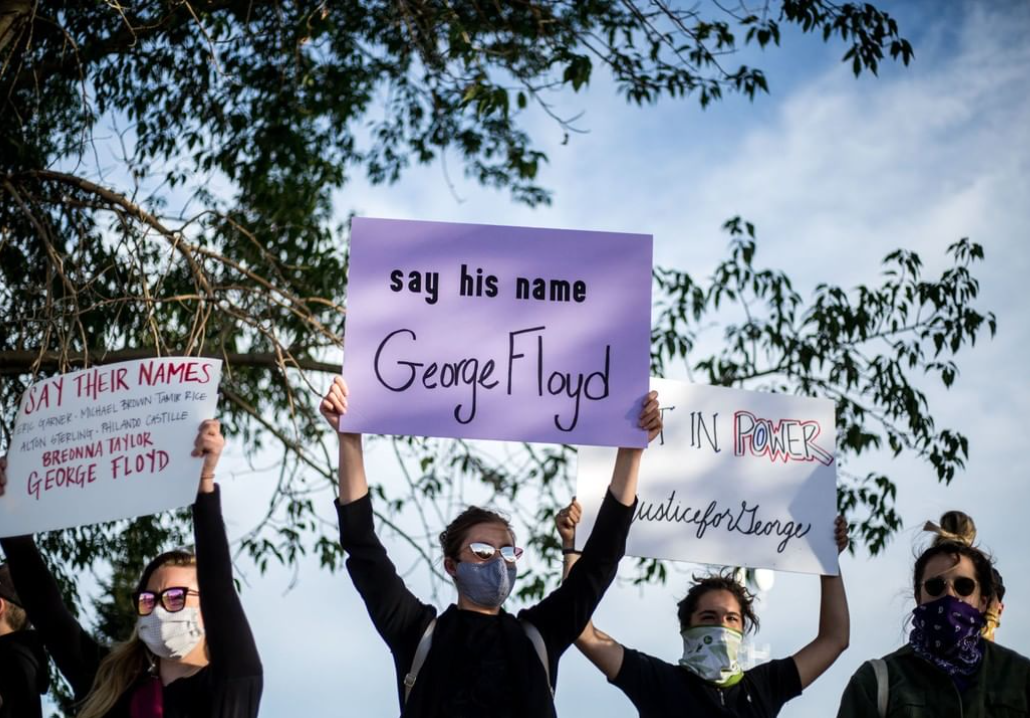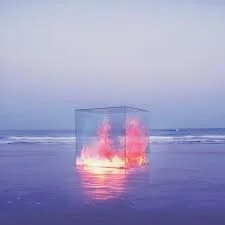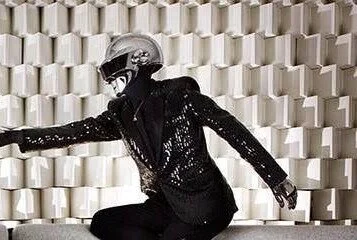Edition № 52 | The 16th of May
Edition № 51 | The 9th of May
Edition № 50 | The 2nd of May
Edition № 49 | The 25th of April
Edition № 48 | The 18th of April
Edition № 47 | The 11th of April
Edition № 46 | The 4th of April
Edition № 45 | The 28th of March
Edition № 44 | The 21st of March
Edition № 43 | The 14th of March
Edition № 42 | The 7th of March
Edition № 41 | The 28th of February
Edition № 40 | The 21st of February
Edition № 39 | The 14th of February
Edition № 38 | The 7th of February
Edition № 37 | The 31st of January
Edition № 36 | The 24th of January
The Movement Report: Inaugural Bi-annual DW Magazine | The 17th of January
Edition № 35 | The 10th of January
Edition № 34 | The 3rd of January
Edition № 33 | The 27th of December
Edition № 32 | The 20th of December
Edition № 31 | The 13th of December
Edition № 30 | The 6th of December
Edition № 29 | The 29th of November
Edition № 28 | The 22nd of November
Edition № 27 | The 15th of November
Edition № 26| The 8th of November
Edition № 25 | The 1st of November
Edition № 24 | The 25th of October
Edition № 23 | The 18th of October
Edition № 22 | The 11th of October
Edition № 21 | The 4th of October
Edition № 20 | The 27th of September
Edition № 19 | The 20th of September
Edition № 18 | The 13th of September
Edition № 17 | The 6th of September
Edition № 16 |The 30th of August
Edition № 15 | The 23rd of August
Edition № 14 | The 16th of August
Edition № 13 |The 9th of August
Edition № 12 |The 2nd of August
Edition № 1-11 | May, June, July
Edition № 11| THE 26TH OF JULY
How can we train ourselves to see the extraordinary in the everyday?
For the past four weeks several DW instructors and I have spent all day with students ranging in age from 7-17 in multidisciplinary workshops exploring imaginary maps of imaginary worlds, making crowns that metaphorically represent the morals, beliefs and traits of leaders we could respect and admire.
We have spent time looking closely at the wonder of the world all around us and exploring the idea that we are supported by endless ideas….EVERYWHERE!
[THINK]
Everyday we start at the Wall of Questions.
What is Art?
Who are artists?
Why do we create art?
What does your “creative process” look like?
Does art make the world a better place?
Do you think you are an artist?
How do artists come up with ideas?
How can ideas change the world we live in?
Do we first have to see things clearly before we can change them?
[FEEL]
Next we warm-up the body and the mind with a mirroring exercise using the body as a checklist, warming up all the body parts.
We start with the breath.
Who feels more comfortable leading and who prefers to follow?
Then we find shapes around the room...everything has shape and if we freeze we are living sculptures.
What can we say with just our body and no words?
What are the two dimensions we are talking about when we say 2-D?
What are the three dimensions we are talking about when we say 3-D?
Is Dance 2-D or 3-D?
[SEE]
In these week-long workshops, students observe the world carefully by going outside on “movement scavenger hunts”, keeping a list and returning to the studio to create found movement dances.
Or walking through the neighborhood looking for interesting shapes, colors and textures and creating their own series of abstract photos.
Only rule: we can’t identify an object in the photo.
What is a found Movement, Sound, Gesture, Object?
What is abstract?
How can it inspire us?
[HEAR]
An artist turns raw material into artistic material by shaping it to represent an idea or an object; just as both Michelangelo shapes a block of marble into David and Jackson Pollock embodies the rhythms of jazz in drip paintings.
The artist turns his perception into something external and objective, a representation of an idea or an experience.
By “chasing away” the source of emotional and mindful creation an artist finds what moves him or her.
Sculptors use this term “chasing away” as they chase away the stone that impedes the figure, the thought, the feeling they wish to reveal.
There are famous carvings by Michelangelo which show the human form only partially released from its marble home.
At Dancers’ Workshop it is not just “the dance”, but art as a universe in which we are all invited to participate. Children remind us to take a bit more time to find, to take notice of... to play with movements, sounds, gestures and objects that capture our curiosity and can encourage our imagination. Though the template of living has changed in the present moment, the need for expression has not changed. If anything, the magnitude of its worth in our personal lives, our most intimate thoughts, joys and fears, has increased. Breathe deeply, walk kindly and look about. Be inspired by these children and the ever changing wash of the world. I always love making art but especially with children! I encourage you to play!
Enjoy this playful video on the process of making and finding inspiration.
Edition № 10
Open / Close
THINK \ FEEL
You can open or close a door, chest, box, window or other containers.
You can open or close your mind...
You can open and close your heart.
These days we are experiencing openings and closures of many types, physically and emotionally.
We cannot deny the science behind these feelings.
SEE
For years I have started many movement classes with the simple action of opening and closing, exploring the folds in our bodies.
The emotional impact of opening and closing your hand, arm, your whole body can be profound. It is the same with the mind and heart.
Being open to experience is often associated with creativity, curiosity and a hunger for knowledge and learning.
People high in this trait are also divergent and abstract thinkers, they are able to come up with multiple novel solutions to a difficult problem.
We all know we have a difficult problem surrounding us.
Everywhere I find if I can live with no investment in a particular outcome, my body and mind can rest….and live with awareness in the present.
I want to share this video with you...one I found a long time ago.
Take note of the blank look in her eyes at the beginning of the video and the blossoming of her spirit by the end.
HEAR
This a time to be open...
to be safe...
to be respectful of this precious life we each have to experience.
Be a bride married to amazement.
Be a bridegroom and take the world into your arms.
❌⭕️❌⭕️
Edition № 9 | When is Enough, Enough?| the 12th of July
[ HEAR ] [ FEEL ] [ SEE ] [ THINK ] HARRY PARTCH
Microtonal composer, Harry Partch once said, “Specialization is the death of an Artist.”
I had the privilege of dancing and performing with The Partch Ensemble from 1980-1983 (I was three years old...I am kidding).
We toured throughout Europe mostly because American audiences were not yet interested in Partch’s work and I’m not sure they are today.
Harry Partch (1901-1974) was a microtonal composer who invented and built his own instruments which had 43 octaves and he wrote his own “operas”.
Some of his instruments were the size of cars and all were very sculptural on stage. (Some of them worked a lot like cars as well, they broke down all the time.
I know, I had the job of being an Instrument Keeper!
While his early work was met with some support and small grants, the Great Depression forced Harry to spend many years as a transient, a hobo who rode the trains, an experience of which the rhythms can be heard in his music.
He was an artist in residence for many years at The University of Illinois where he was able to focus on his music and production ideas.
The last twelve years of Partch’s life would see more creative work, major productions of his total-theater pieces, and a greatly-expanded second edition of his book Genesis of Music.
Contemporary music artist Tom Waits was inspired by the music of Harry Partch.
Today we would call Partch an Interdisciplinary Artist; one who takes the knowledge and working methods of one discipline and applies them to another discipline to provide a broader perspective and a deeper learning experience.
My short time with the Partch Ensemble greatly influenced my ideas and thus my interest and love of interdisciplinary Art.
Look in any Arts or cultural history text and you’ll not likely find an entry for Interdisciplinary Arts, yet in the arts it’s hardly new.
One need only think of the Artist-scientist Leonardo Da Vinci and the others I shared last week.
This week, I would like to share three other Artists who paved the way by blurring the lines of multi Art disciplines to create their own.
WHEN IS ENOUGH, [ ENOUGH ] ?
[ HEAR ] [ FEEL ] NICK CAVE
A multifaceted Artist, Nick Cave’s work defies simple categorization.
Cave works with choreographers, dancers, and amateur performers to produce lavish community celebrations in non traditional venues for art.
Dazzling in their movement, his sculptures are crafted in collaboration with artisans from a dizzying array of materials that include beads, raffia, buttons, sequins, twigs, fur, and fabric.
Fully concealing the body, the Soundsuits serve as an alien second skin that obscures race, gender, and class, allowing viewers to look without bias towards the wearer’s identity.
Cave regularly performs in the sculptures himself, dancing either before the public or for the camera, activating their full potential as costume, musical instrument, and living icon.
“I’m a messenger first, not an artist.”
[ SEE ] [ THINK ] LAWRENCE WEINER
Lawrence Weiner is internationally renowned for his contribution to conceptual art through text-based sculpture, in which the statement describing a work is indistinguishable from the work itself.
A pioneering Conceptual artist, Weiner dematerialized the object of art into pure language.
Through words without imagery, their boundless interpretation is accessible to the most diverse of audiences.
[ ENOUGH ] PAT OLESZKO
“In that eureka moment I became pedestrian art: using the body as a platform for notions in motion. This seminal impulse morphed into literally breathing life into the art forum and giving my art my legs to stand on.”
Edition № 8 | Keepers of the Culture | First Sunday in July, the 5th
[ SEE ]
[ HEAR ]
[ FEEL ]
[ THINK ]
[ KEEP ]
In the midst of the glaringly tragic reality of WWII, playwright Virginia Woolf encouraged people to become more conscious of the artists, Keepers of the Culture, those with supernatural vision and insight.
In difficult times, she urged people to rely on the poets, writers, dancers and painters: the true visionaries who can see the light in the darkness, who can discover hope in the midst of despair, who can produce calmness out of the chaos of uncontrolled emotions, and who can still find beauty in the everyday life of an increasingly violent world.
Edition № 7 | The Art of the Absurd, Part I | The 28th of June
When I wake to my phone's daily briefing from the New York Times I am shocked by what I read.
Everything from politics, human rights to health alerts; our country’s’ chaos borders on the Absurd.
Have we crossed the line from comedy to tragedy or tragedy to comedy?
John Updike said, “Is not the decisive difference between comedy and tragedy that tragedy denies us another chance?”.
When my day goes upside down, unsure if I should cry or laugh, I often say, "This is Absurd...this is a Lucille Ball moment!" It saves me.
Albert Camus spoke of the Absurdity of existence....
“The absurd refers to the conflict between the human tendency to seek inherent meaning in life and the silent answer of the universe in which a harsh truth arises that there is no inherent meaning in life.”
Seems rather dark to me.
However, he is also quoted as saying,
“In the midst of hate, I found there was, within me, an invincible love. In the midst of tears, I found there was, within me, an invincible smile. In the midst of chaos, I found there was, within me, an invincible calm. I realized, through it all, that in the midst of winter, I found there was, within me, an invincible summer.”
And this makes me happy. For it says that no matter how hard the world pushes against me, within me, there’s something stronger-something better, pushing right back.
As an Artist, I often feel like I am a fish in a fishbowl looking out at the world. I am a voyeur, an interpreter,...
striving to create work that comes from my experience and understanding as a human.
Shakespeare said it very well "All the world's a stage and all the men and women merely players. They have their exits and their entrances, and one man (woman) (they) in his (her) (their) time plays many parts."
Absurdity is the moment we look at ourselves, or others, and see the pretensions of survival, the facades we erect to inflate our importance or meaning: An overblown curriculum vitae, a plethora of walk-in closets, ownership of all the swans in England, name dropping-all of which the impersonal cosmos regards as insignificant.
In ordinary life events take on opposing meanings:
Someone long windedly supports a motion that has already passed,
you declare your love over the phone to a recorded announcement;
as you are receiving an honor, your pants fall down.
Such is life!
Edition № 6 | The 21ST of June | Summer Solstice & the Rite of Spring
Last night, the 20th of June 2020, the coinciding of the Summer Solstice and the Solar Eclipse was celebrated around the world. The word 'solstice' is derived from the Latin sol ("sun") and sistere ("to stand still"). The words 'solar eclipse' means “ring of fire”. This coincidence last occurred in 1982 and won’t again until 2039.Tribute to: Jean Erdman, died May 4, 2020 (aged 104)
Celebrate this moment when the most light is available to us. Be conscious: see, feel, hear and think as we move through these difficult times together. ___
The Rite of Spring (Весна священная, Vesna svyashchennaya, Le Sacre du printemps, sacred spring) original score by Igor Stravinsky is a legend, one of the greatest, most infamous succès des scandales of modernist art. The avant-garde nature of the music and choreography caused a sensation. Many have called the first-night reaction a "riot" or "near-riot” since its debut in 1913.
Each of the four videos shared above are versions of The Rite of Spring from different companies and choreographers.
Edition № 5 | The 14th of June | EQUAL =
John Wheeler’s Participatory Universe:
How did we get here and why?
[ THINK ]
Shepard FaireyWhat does it mean to be “equal”?
In many societies it seems that equality is to be desired for oneself but not necessarily for others.
It seems that it is nice to be on top.
When Louis XIV stated that he was “France”, I suppose he thought of all others as fois gras.
Societies are often based on “class”; class is defined not by who you are, but the class you have inherently been born into.
In the early days of this country the word “equal” appears prominently in the Declaration of Independence but even at that time, the contradiction between the phrase “all men are created equal” and the reality within society did not go unnoticed nor uncriticized.
In 1776, Thomas Day, an abolitionist, remarked, “if there be an object truly ridiculous in nature, it is an American patriot, signing resolutions of independence with one hand, and with the other brandishing a whip over his affrighted slaves.”
This statement was written after they had begun the decimation of the American Indian and didn’t recognize women as equals.
[ HEAR ]
What is the recipe for equality when it comes to humanity?
First and foremost, there is a need for listening, understanding and knowledge.
Secondly, for finding the connections that bind us together rather than succumbing to the ignorance and fears that are often drummed up to tear us apart.
In exploring connective pathways for change, we must understand the larger event of which we are all participants.
I crave authentic experiences, rooted in different cultures, enriching our daily lives.
We must find ways to embrace these differences and share what we don’t yet know about each other.
This sharing develops equal respect and at its heart is inspiring.
Ask yourself, what you want for your own family and community in the future.
[ SEE ]
Shepard FaireyAccepting that there is but one family, the human race, and seeing that we together are all a part of it.
Accepting that what we do and the way we live impacts many others we have never met.
Seeing the richness, individuality and extreme beauty that exists in diversity can create a greater hunger to nurture equality.
[ FEEL ]
Thank you to the Jackson Police Department for keeping us all safe. We feel you.
Edition № 4 | The 7th of June | QUESTION
For the past 22 years as Artistic & Executive Director of Dancers’ Workshop, I have tried to create a fertile ground for artists, students and audiences of all races and creeds, to freely explore, construct, present and question their ideas and beliefs.
Pinedale, Wyoming | JH News & GuideWe have asked for and listened to input and feedback from our community. I have used my voice thoughtfully and purposefully through my choices and from the important conversations with artists we invite here, support and present.
Most of these artists visit us from urban areas. It is an important part of our residencies that we are not only generous in providing all they need to create, but that we also provide an opportunity to share with them the extraordinary beauty of our surroundings. All of us, hosts and visitors alike, are reminded of how profound and powerful nature is. We are a part of the nature we view.
[ SEE ]
On May 25th, our world was struck with a horrific and sadly familiar tragedy based in racism and indifference. George Floyd was killed unresisting while in a submissive position by a police officer as other officers stood by. After trying several times to watch the full video in an attempt to sort out my own thoughts, these questions kept racing through my mind and my viscera.
What were the officers fearing?
What emotions were driving their actions?
Did they not hear him say he couldn’t breathe and him calling out?
How can something so wrong happen in the presence of people charged with protecting us?
Who can be trusted?
What can I do?
How can I use my voice for change?
[ HEAR ]
“It may be that when we no longer know what to do, we have come to our real work and when we no longer know which way to go, we have begun our real journey. The mind that is not baffled is not employed. The impeded stream is the one that sings.”― Wendell Berry
Adrian Piper“When you arrive in your driveway and turn off the car, you remain behind the wheel for another ten minutes. Sitting there staring at the garage door you are reminded that a friend once told you there exists the medical term---John Henryism---for people exposed to stresses stemming from racism. They achieve themselves to death trying to dodge the buildup of erasure.” ― Claudia Rankine, author of CITIZEN, An American Lyric.
[ FEEL ]
Black & White was commissioned by Dancers' Workshop (DW) and performed with Contemporary Dance Wyoming (CDW) in 2014. Dancers’ Workshop,
as an organization of individuals,
we will continue to ask questions, listen, educate and act with integrity to continue to give back to the community that gives so much to us.
[ THINK ]
Edition № 3| THE 31ST OF MAY | GREEN
When I think of a predominately green garden, Japanese Garden style comes to mind. Various shades of green are a basic element in Japanese garden designs.
The color green is the perfect combination of the basic primary colors yellow (warm, energizing) and blue (cool, calming) creating a perfect balance.
Throughout history Japanese gardens have emphasized the charm of restraint; beauty is so concealed that it can be discovered individually, thus providing a thrill of joy to the soul.
SEE [
click on your favorite green tree ]
In a modern urban culture, the vast majority of us are very disconnected from nature.
We are thoroughly domesticated. Wedded to technology and distractions, any sense of wildness has been effectively banished from our heated and air-conditioned lives.
The result is that we are severed from a deeper, authentic sense of ourselves — from our innate power and wildness.
The part that not only connects to and appreciates nature, but also is nature.
I cannot count the hours I have spent roaming wild green landscapes.
FEEL [ click on the green asterisk ]
The wild soul is the authentic, creative, timeless core within us like a labyrinth, we can walk it. It is a metaphor of life’s journey. It is a symbol that creates a sacred space and space that takes us out of our ego.
Beneath a heavy grey sky, a bright blue sky, crossing creeks and walking along the Snake River, following one of my large black dogs with his nose to the ground, we have looked into the eyes of sly red foxes, curious wolves, wild horses and unfortunately a brave porcupine. The labyrinth within us. THINK [ click on the green minotaur’s head ]
Edition № 2 | THE 24TH OF MAY | SPACE
Space is for possibilities.
As a dancer, space means everything to me.
It is the canvas I create on. It is sacred.
Space surrounds us, over, under and around, leading us infinitely beyond ourselves and into one’s self.
[THINK]
Space is an invisible bubble that constitutes each individual's “territory”.
We carry it with us as we move.
Necessary yet seemingly arbitrary boundaries of six, ten and twelve feet are set to create a new dance between us.
Our walks can be resplendent with interactions, abrupt stops, dodgings and shifts in spacing, revealing who we know, who we wish to talk with and our level of fear.
Equally, it can provide a labyrinth of thresholds, corridors and pathways to play in.
[SEE]
Space is for Art.
For musicians music is not just notes, but the spaces between notes.
Dancers who move through the counts and draw movements beyond the measures of the music are dancing within the music, not to the music.
F
or visual artists compositional balance can be created with the use of positive and negative space, equations of emotional and visual impact.
I was always taught that both positive and negative space should be of equal importance.
[FEEL]
Space is a nest.
As we spend what seems like endless amounts of time in our own houses or rooms, and within ourselves, we take pause.
I have been rereading Gaston Blanchard's "The Poetics of Space” in which Bachelard maintains that the house is a shelter, without which the human would be a dispersed figure.
The house collects and contains past, present and future; it integrates thoughts and memories and desires – all this it does by allowing the human to “daydream”.
Each nook and corner is a resting-place for daydreaming, for reflection and reconnection.
This is a time to be aware of space and to explore it. Find connections that produce calm, resilience and a sense of purpose and rest, mind and body, in the quiet spaces of your nest.
[HEAR]
It was a sunny day and I went to the park and sat on a bench. I was one of many coming out from under our rocks to warm and lengthen. He was two benches down, a gentle older man staring off into the place between things, beyond any simple past, staring into the beginning or the end, it was hard to say.
When he came up our eyes meet and he knew I’d seen him journey there and back. There was no point in looking away. And so he shuffled over. And sat beside me. The sun moved behind the one cloud and he finally said in half a quiver, “How can we go there together?”
I searched my small mind for an answer. At this, I looked away and the sun came out and I realized this is what the lonely sages of China were talking about what the moon has whispered before turning full for centuries, what dancers leap for, what violinists dream after fevering their last note.
But I was awkward and unsure. He stared, as if to search my will, and after several minutes, he just patted my knee and left. I watched him darken and brighten in the sun, and vowed to look in the folds of every cry for a way through, and hope someday to meet him there. Mark Nepo
🖌 Tanapol Kaewpring | Aleera Fine Art | M.C. Escher | Jairo RuedaEdition № 1 | THE 17TH OF MAY | TOUCH
Violated human rights and moral standards have forced human beings to create policies which define appropriate touch. Today this pandemic has asked us all to drop into slow motion and zoom in on all we touch. No touching!
Daft Punk | Michaelangelo Our Isolation and social distancing has taken away one of the elemental experiences of human existence: the ability to touch and be touched. Fear of transmission of an unseen virus denies us hugs, handshakes, and close proximity of all kinds.
Eye contact for the most part is relegated to a realm of pixel production squares. Everyone mutes themselves in politeness and with body language hidden we struggle to communicate.
What can we learn from our present dilemma? What can we carry forward from today in order to prepare to not squander opportunities that arise both now and later, as more of our freedom to relate to one another returns to us? FEEL
One immediate answer is to recognize and develop the importance of listening. We have the opportunity to listen more carefully to others, so that our response has a greater chance of actually “touching them.”
Of course, this requires a better understanding of our own needs in relation to others: perhaps an initial stance of ‘neutrality”, without the need to prove anything, win anything; working together for a greater return. HEAR
As an artist, we strive to enter all aspects of our work, rehearsal, teaching and performing as listeners; to allow for accidents of creative potential, and address change. SEE
Yes, it is a ripe time to practice the art of listening, but not silence.
Take pause. Reflect on what has been said and what you heard….understand what touches you deeply. THINK
10TH OF MAY | HOME
3RD OF MAY | UNKNOWN



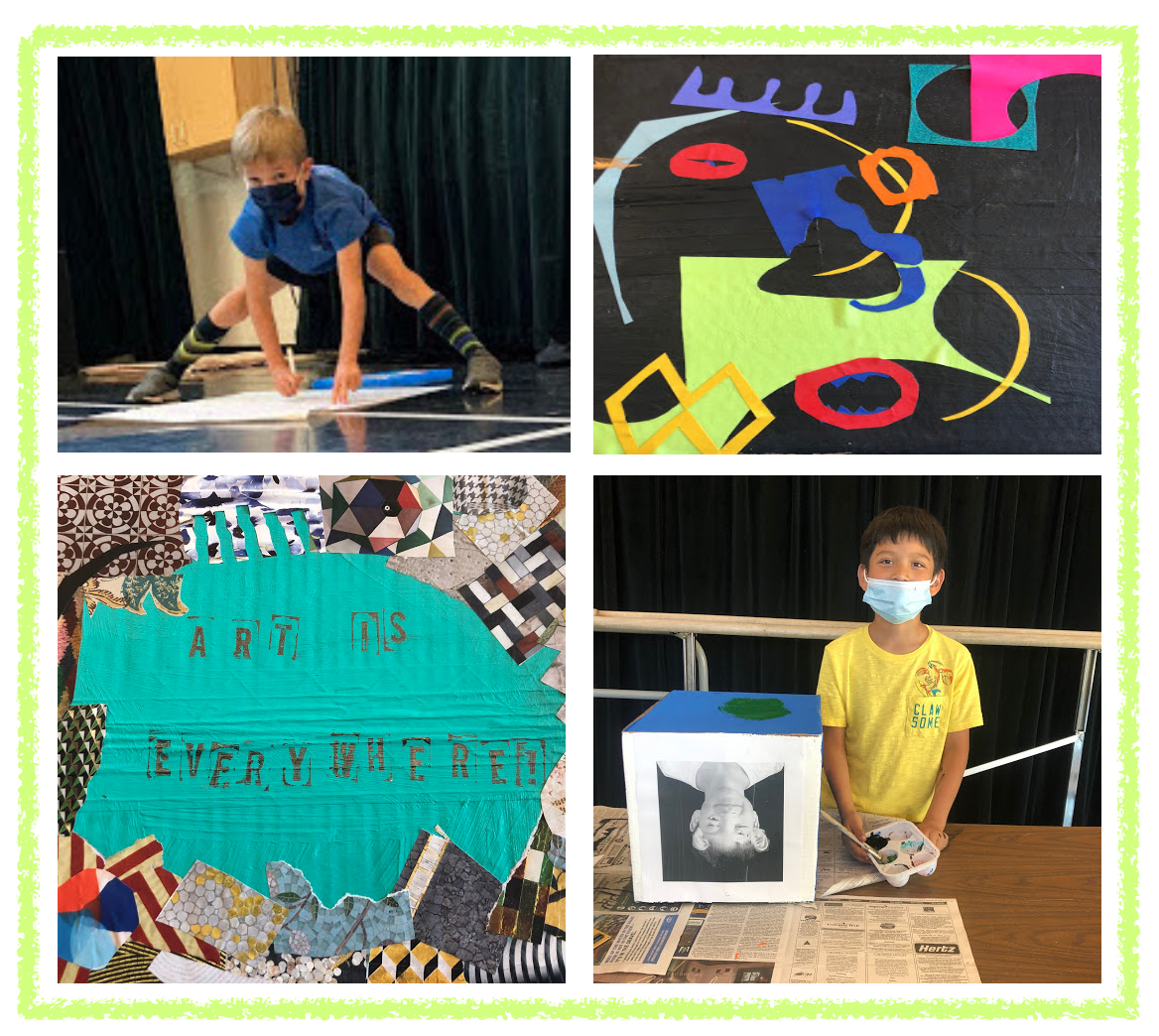
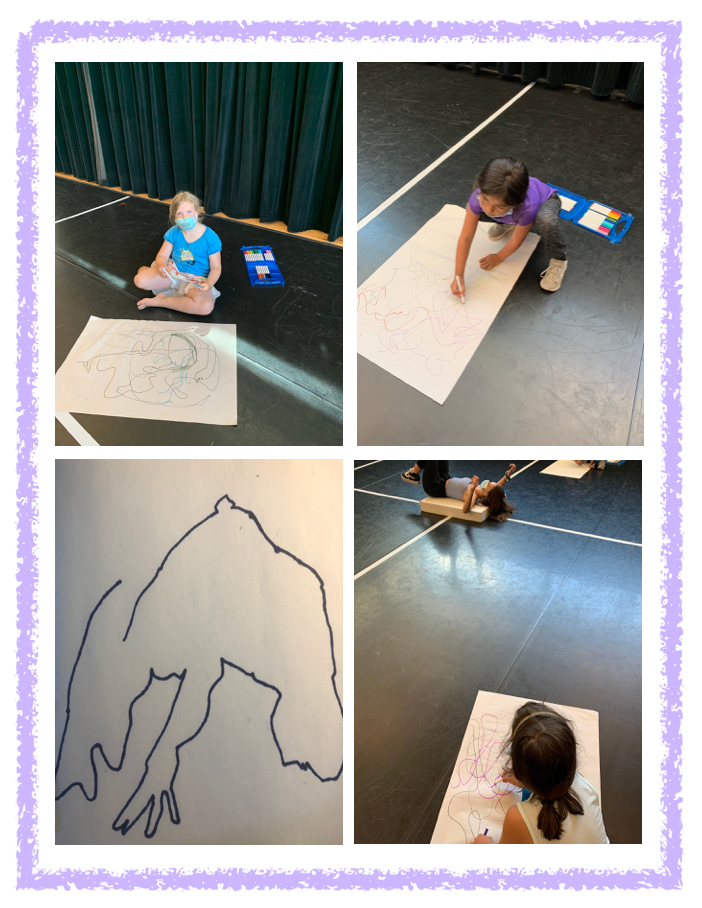

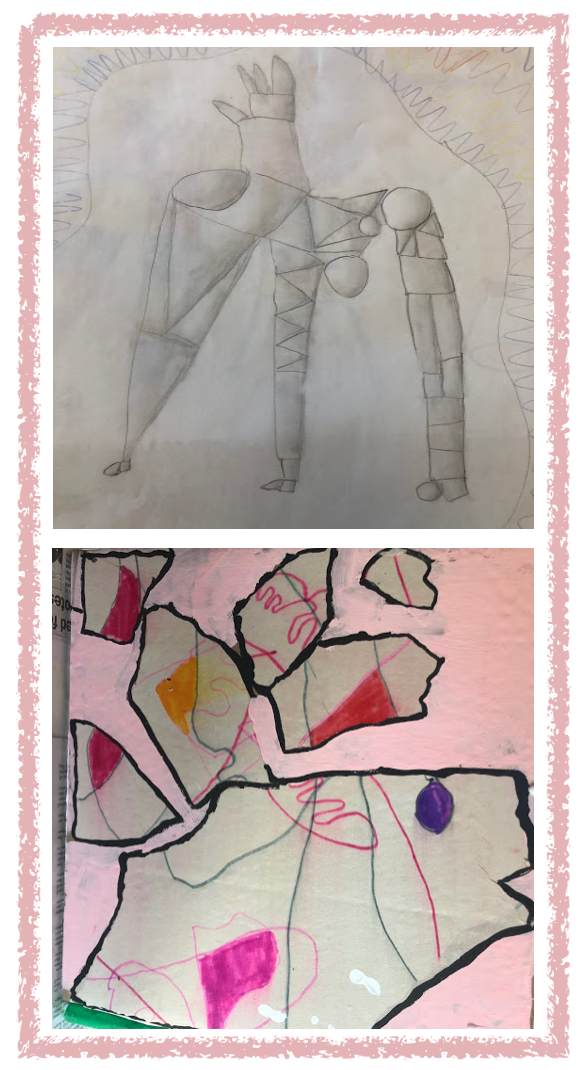



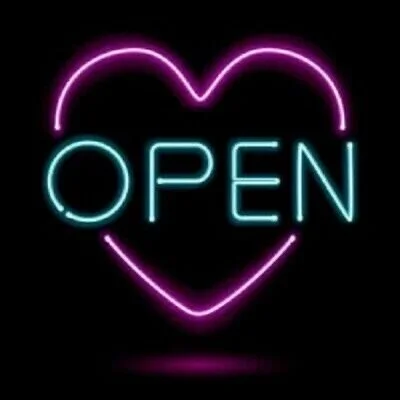
![[ THINK ] LAWRENCE WEINER](https://images.squarespace-cdn.com/content/v1/5e1763ebb5dd4f1a8524683d/1594499639080-DVEQ2LRJYKJRXR3QR8GR/Lawrence.png)


